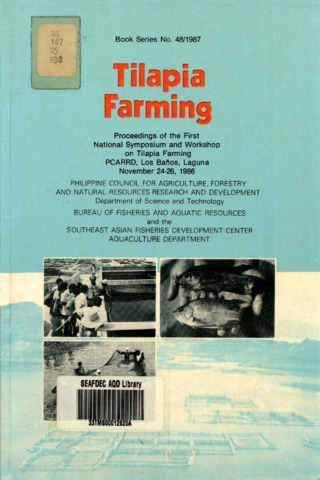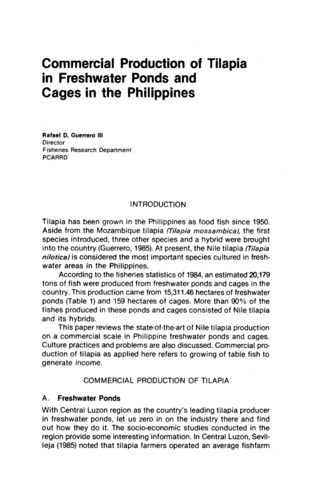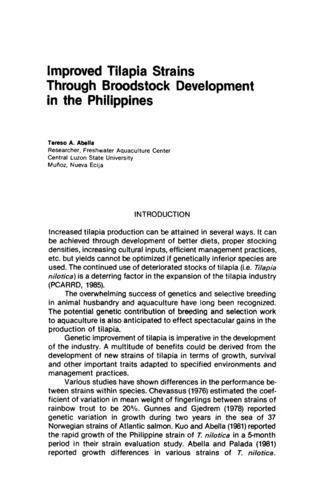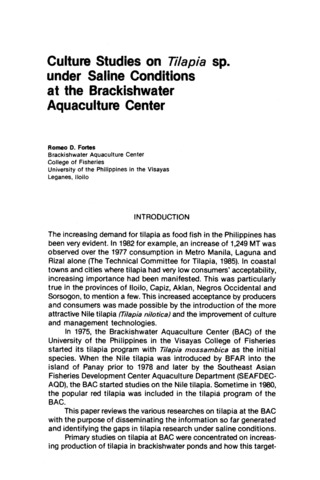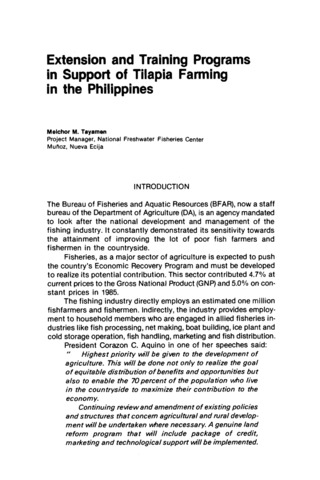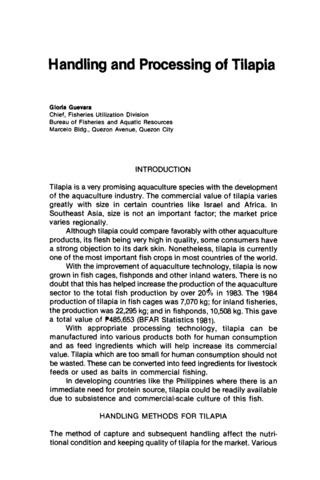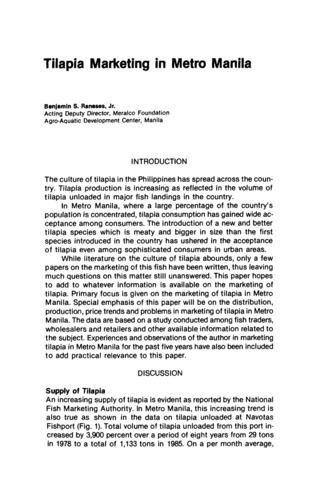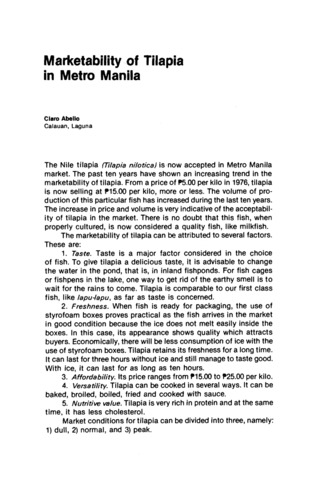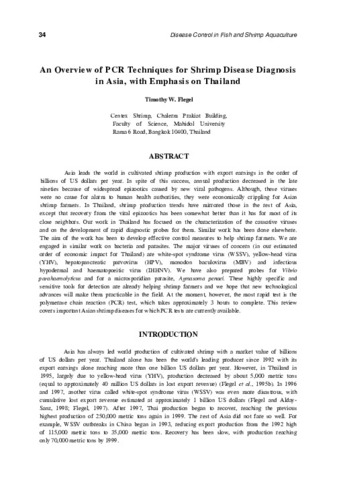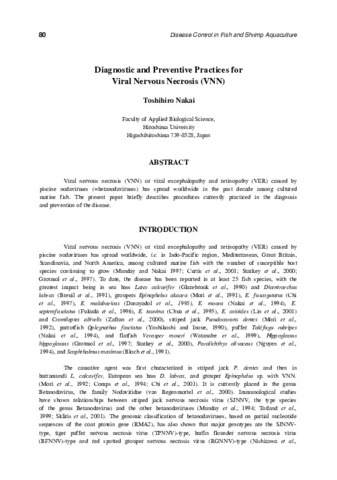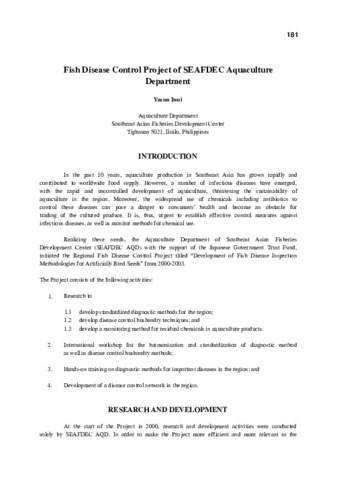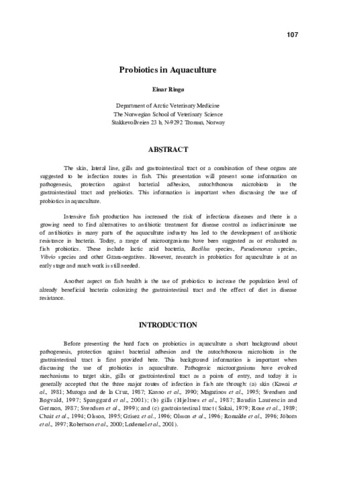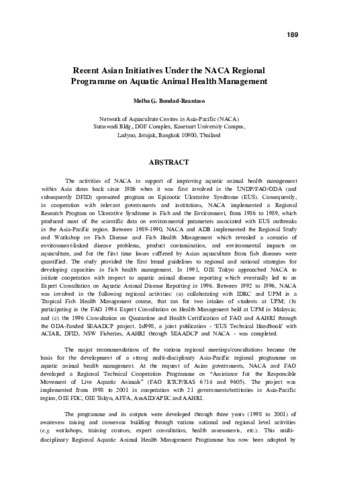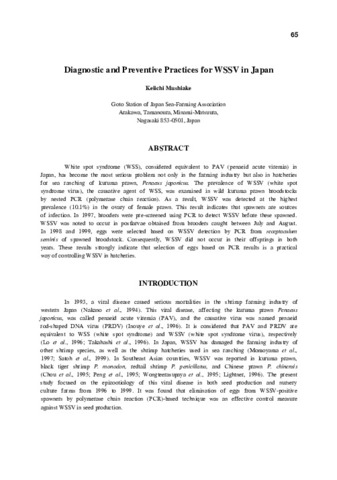การท่องเว็บ 02 SEAFDEC/AQD Collaborative Publications ตามวันที่ออก
Now showing items 1-20 of 453
-
Series: ICLARM technical reports; 1 | SEAFDEC Aquaculture Department contribution; No. 93
The economics of the milkfish fry and fingerling industry of the Philippines
(International Center for Living Aquatic Resources Management; Aquaculture Department, Southeast Asian Fisheries Development Center, 1981)The fry and fingerling industry of the milkfish (Chanos chanos Forskal) in the Philippines is alleged to suffer from certain imperfections. Primary among these are an annual shortage of catch necessary to meet the stocking ... -
Tilapia hatchery and nursery systems: Operation and management
(Philippine Council for Agriculture, Forestry and Natural Resources Research and Development; Bureau of Fisheries and Aquatic Resources; Aquaculture Department, Southeast Asian Fisheries Development Center, 1987)The successful and profitable production of Tilapia nilotica in ponds or cages is predominantly influenced by the environment and hereditary traits of the stock. Therefore, stocking of high quality fingerlings is a major ... -
Tilapia Farming: Proceedings of the First National Symposium and Workshop on Tilapia Farming, PCARRD, Los Baños, Laguna, November 24-26, 1986
(Philippine Council for Agriculture, Forestry and Natural Resources Research and Development, 1987) -
Commercial production of tilapia in freshwater ponds and cages in the Philippines
(Philippine Council for Agriculture, Forestry and Natural Resources Research and Development, 1987)This paper reviews the state-of-the-art of Nile tilapia production on a commercial scale in Philippine freshwater ponds and cages. Culture practices and problems are also discussed. Commercial production of tilapia as ... -
Improved tilapia strains through broodstock development in the Philippines
(Philippine Council for Agriculture, Forestry and Natural Resources Research and Development, 1987)Increased tilapia production can be attained in several ways. It can be achieved through development of better diets, proper stocking densities, increasing cultural inputs, efficient management practices, etc. but yields ... -
Culture studies on Tilapia sp. under saline conditions at the Brackishwater Aquaculture Center
(Philippine Council for Agriculture, Forestry and Natural Resources Research and Development, 1987)This paper reviews the various researches on tilapia at the BAC with the purpose of disseminating the information so far generated and identifying the gaps in tilapia research under saline conditions. Primary studies on ... -
Extension and training programs in support of tilapia farming in the Philippines
(Philippine Council for Agriculture, Forestry and Natural Resources Research and Development, 1987)The Bureau of Fisheries and Aquatic Resources (BFAR), now a staff bureau of the Department of Agriculture (DA), is an agency mandated to look after the national development and management of the fishing industry. It ... -
Handling and processing of tilapia
(Philippine Council for Agriculture, Forestry and Natural Resources Research and Development, 1987)Tilapia is a very promising aquaculture species with the development of the aquaculture industry. The commercial value of tilapia varies greatly with size in certain countries like Israel and Africa. In Southeast Asia, ... -
Tilapia marketing in Metro Manila
(Philippine Council for Agriculture, Forestry and Natural Resources Research and Development, 1987)The culture of tilapia in the Philippines has spread across the country. Tilapia production is increasing as reflected in the volume of tilapia unloaded in major fish landings in the country. In Metro Manila, where a large ... -
Marketability of tilapia in Metro Manila
(Philippine Council for Agriculture, Forestry and Natural Resources Research and Development, 1987)The Nile tilapia (Tilapia nilotica) is now accepted in Metro Manila market. The past ten years have shown an increasing trend in the marketability of tilapia. From a price of P5.00 per kilo in 1976, tilapia is now selling ... -
Series: ICLARM Technical Report; 58 | ICLARM Contribution; No. 1602
Bangus fry resource assessment in the Philippines
(ICLARM - The World Fish Center, 2001)Bangus or milkfish is the national fish of Philippine. Bangus culture is traditionally based on fry collected from the wild. Due to growing demand for fry the bangus industry. The Philippines Bureau of Fisheries and Aquatic ... -
Husbandry and health management of grouper
(Asia-Pacific Economic Cooperation; Aquaculture Department, Southeast Asian Fisheries Development Center, 2001)The groupers (Family Serranidae) are among the most popular species in the live reef food fish industry in the Asia-Pacific region. Groupers are generally fast growing, hardy, suitable for intensive culture, and with ... -
Vibrio harveyi and the 'green water culture' of Penaeus monodon
(Aquaculture Department, Southeast Asian Fisheries Development Center, 2002)The 'green water culture' of the tiger shrimp, Penaeus monodon, is an innovative culture technique for the grow-out rearing of shrimps. This culture method involves the use of rearing water of tilapia for the rearing of ... -
An overview of PCR techniques for shrimp disease diagnosis in Asia, with emphasis on Thailand
(Aquaculture Department, Southeast Asian Fisheries Development Center, 2002)Asia leads the world in cultivated shrimp production with export earnings in the order of billions of US dollars per year. In spite of this success, annual production decreased in the late nineties because of widespread ... -
Diagnostic and preventive practices for viral nervous necrosis (VNN)
(Aquaculture Department, Southeast Asian Fisheries Development Center, 2002)Viral nervous necrosis (VNN) or viral encephalopathy and retinopathy (VER) caused by piscine nodaviruses (=betanodaviruses) has spread worldwide in the past decade among cultured marine fish. The present paper briefly ... -
Fish disease control project of SEAFDEC Aquaculture Department
(Aquaculture Department, Southeast Asian Fisheries Development Center, 2002) -
Probiotics in aquaculture
(Aquaculture Department, Southeast Asian Fisheries Development Center, 2002)The skin, lateral line, gills and gastrointestinal tract or a combination of these organs are suggested to be infection routes in fish. This presentation will present some information on pathogenesis, protection against ... -
Integration of finfish in shrimp (Penaeus monodon) culture: an effective disease prevention strategy
(Aquaculture Department, Southeast Asian Fisheries Development Center, 2002)A farm trial on integration of finfish (i.e., tilapia) in shrimp (Penaeus monodon) culture was conducted in Negros Occidental, Philippines to prevent luminous vibriosis in shrimp. The farm engaged in shrimp monoculture ... -
Recent Asian initiatives under the NACA regional programme on aquatic animal health management
(Aquaculture Department, Southeast Asian Fisheries Development Center, 2002)The activities of NACA in support of improving aquatic animal health management within Asia dates back since 1986 when it was first involved in the UNDP/FAO/ODA (and subsequently DFID) sponsored program on Epizootic ... -
Diagnostic and preventive practices for WSSV in Japan
(Aquaculture Department, Southeast Asian Fisheries Development Center, 2002)White spot syndrome (WSS), considered equivalent to PAV (penaeid acute viremia) in Japan, has become the most serious problem not only in the farming industry but also in hatcheries for sea ranching of kuruma prawn, Penaeus ...



